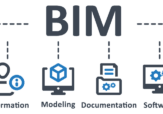ModMax: Redefining Modular Construction with Confidence and Precision
ModMax was born out of frustration—frustration with five persistent pain points in modular construction: Permitting bottlenecks. Production delays. Rigid designs. Disconnect between “the office” and the field. Lack of transparency and communication.
“We didn’t want to be another company just promising faster and smarter,” notes CEO and Founder Ben Gaxiola. “We built ModMax to remove friction at every stage so clients have real confidence. Faster and smarter follow naturally. We built not just a factory, but a system.”
“Alongside our Tennessee plant, my founding partner developed ModMax.AI—a digital backbone that ties together inventory, production, scheduling, quality assurance, and quality control,” Gaxiola explains. “ModMax.AI merges ERP and CRM. When a customer moves forward in the CRM, ERP auto-triggers materials planning and production scheduling, and live KPI dashboards keep every project predictable, repeatable, and scalable.”
“Our goal is simple: make modular the confidence path for communities and developers,” says Gaxiola.
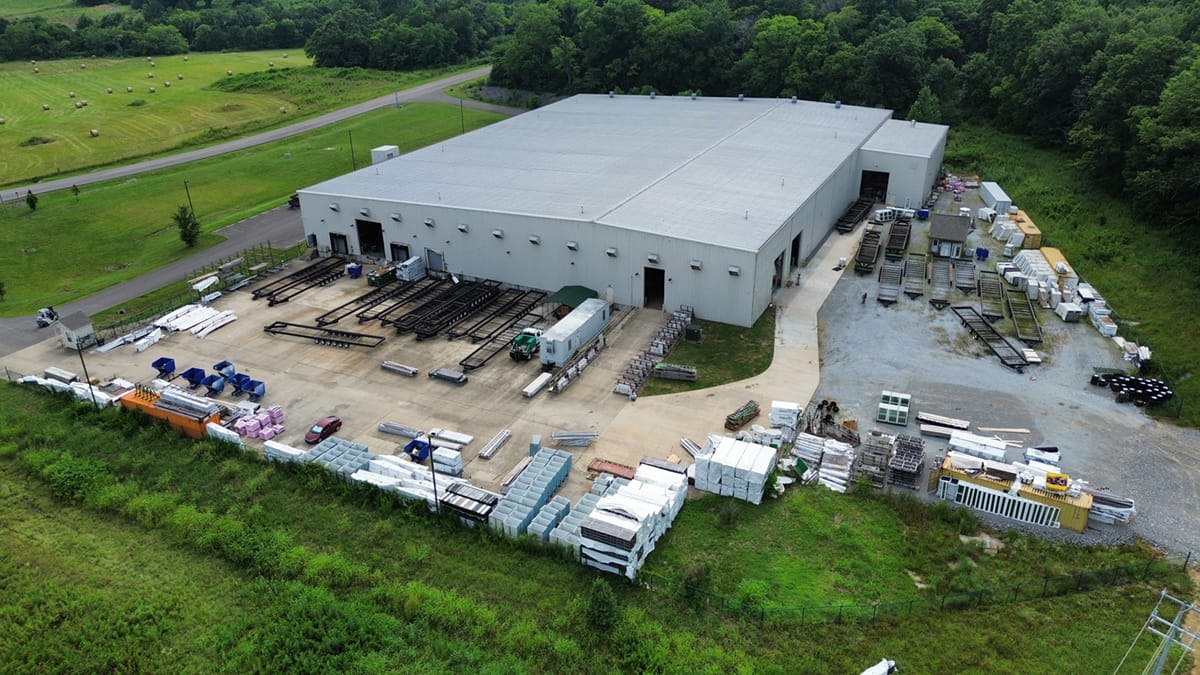
The ModMax factory in Tennessee.
Tennessee: The Heart of ModMax’s Operation
Tennessee was a natural choice, offering advantages in workforce, logistics, and suppliers. “Tennessee sits in the heart of the Southeast housing crisis and offers a strong manufacturing workforce, central logistics with interstate and rail, and a deep supplier base,” Gaxiola explains. “For clients, this means faster delivery across multiple states and better long-term service.”
When retooling the Tennessee plant, the team started with principles, not equipment: clarity, flow, and repeatability. “The line runs in a U-shape, always one direction,” Gaxiola notes. “For clients, these choices deliver something more valuable than speed alone: certainty that every module comes out the same, schedules hold, and field crews receive a product designed to install cleanly.”
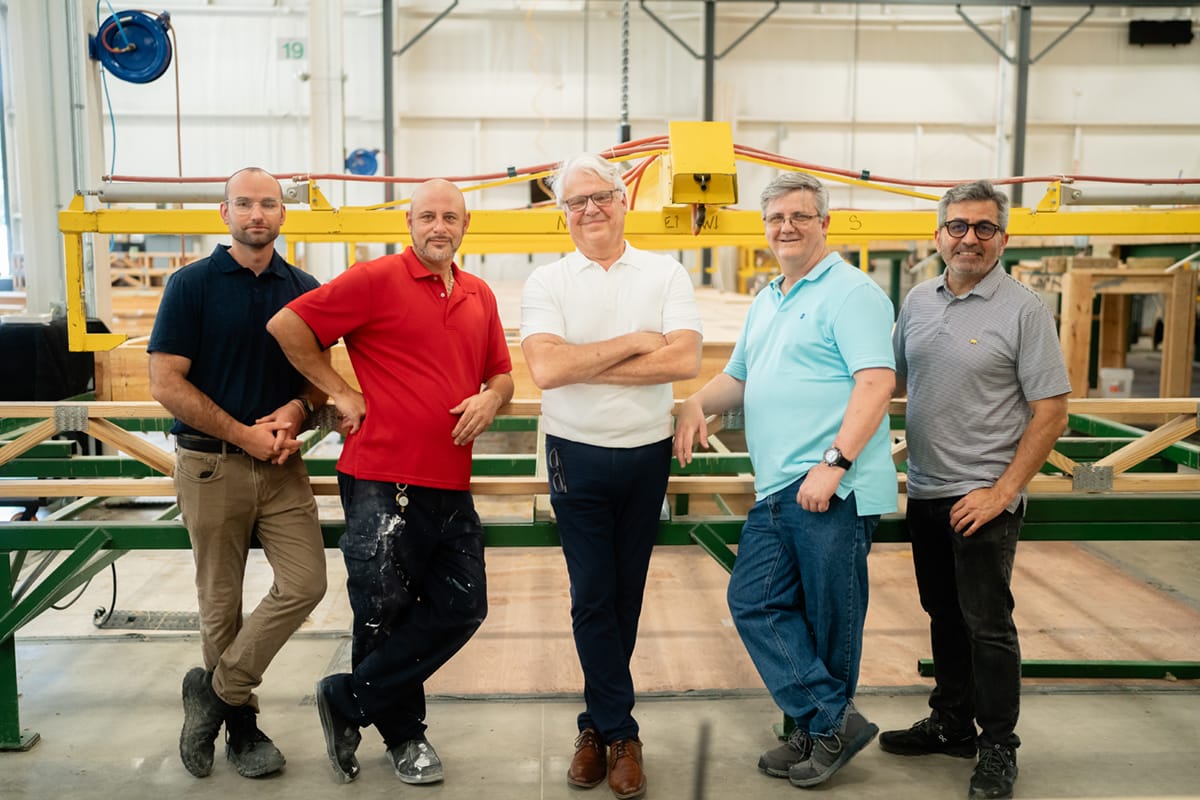
Ben Gaxiola and the ModMax team.
Quality Built In
Quality isn’t inspected at the end—it’s embedded at every step. Visual kiosks guide each station, reducing errors, while multiple layers of QA and QC catch issues before they cascade. “For owners evaluating a modular plant, the question isn’t, ‘Do they inspect?’—it’s, ‘Do they have a system that makes quality unavoidable?’”
Good facility bones accelerated ModMax’s launch. High ceilings, wide bays, cranes, and robust infrastructure let the company focus capital on performance rather than basic retrofitting. Safety, ergonomics, and precision systems were layered in from the start. “Instead of retrofitting just to make it work, we retooled it to make it better,” Gaxiola notes.
Workforce stability is equally important. “We’ve invested in partnerships with technical colleges, workforce programs, and community groups,” Gaxiola says. Apprenticeship-style training inside the plant, long-term vendor contracts, and a flexible staffing model ensure stability and responsiveness. “We do have a base of W-2 employees, which gives us that family feel, and we can scale with specialized staffing when projects surge.”


The Missing Middle
ModMax’s first wave focuses on the “missing middle,” including duplexes, triplexes, and small multifamily clusters. These models fit Southeastern zoning and repeat easily, maximizing value and minimizing risk. “The duplex projects are already proving the point: set in days, not weeks, with cost certainty at contract and predictable rent-ready timelines,” Gaxiola notes.
The platform also features studios and one-bedroom modules, all of which offer accessibility options. Urban innovations—such as front-porch series and shared-living layouts—allow modular units to adapt to tight lots and complex sites. “A lot of these hit the missing middle, serving young families and downsizers where demand is strongest and supply is weakest,” he says. Permit-ready plan libraries and pre-approved details mean projects can start faster, and the designs translate seamlessly to multifamily, dorms, and hospitality applications.
Collaboration: The First Phase of Production
Collaboration is treated as the first phase of production, not a side note. Developers align on product fit and financing, GCs coordinate site logistics early, AHJs engage upfront, and architects integrate modular principles from the start.
“The best practice is not treating modular as a product drop-off,” says Gaxiola. “Bringing all stakeholders in early removes risk before it hits the field. The biggest loss isn’t funds—it’s time. You can’t remake time.”
Standardization Without Sacrifice
Standardized structural frames and plug-and-play MEP cores are at the heart of ModMax’s efficiency. They lower costs, simplify approvals, and reduce risk. “Design teams don’t lose creativity—they gain certainty,” Gaxiola says. “Architects can tailor facades, finishes, and layouts while staying within modular efficiencies. That’s where real profitability begins for every team involved.”
ModMax is also standardizing its kit of parts, including kitchens and bathrooms, to speed production across project types. “Unlike off-the-shelf kits designed for large multifamily ADA builds, we adapt for duplexes and residential units, where space is tighter,” Gaxiola explains. Pre-built cores allow teams to focus on aesthetics rather than recreating core components. The company is even exploring cross-laminated timber for sustainability, ease of construction, and design enhancement.
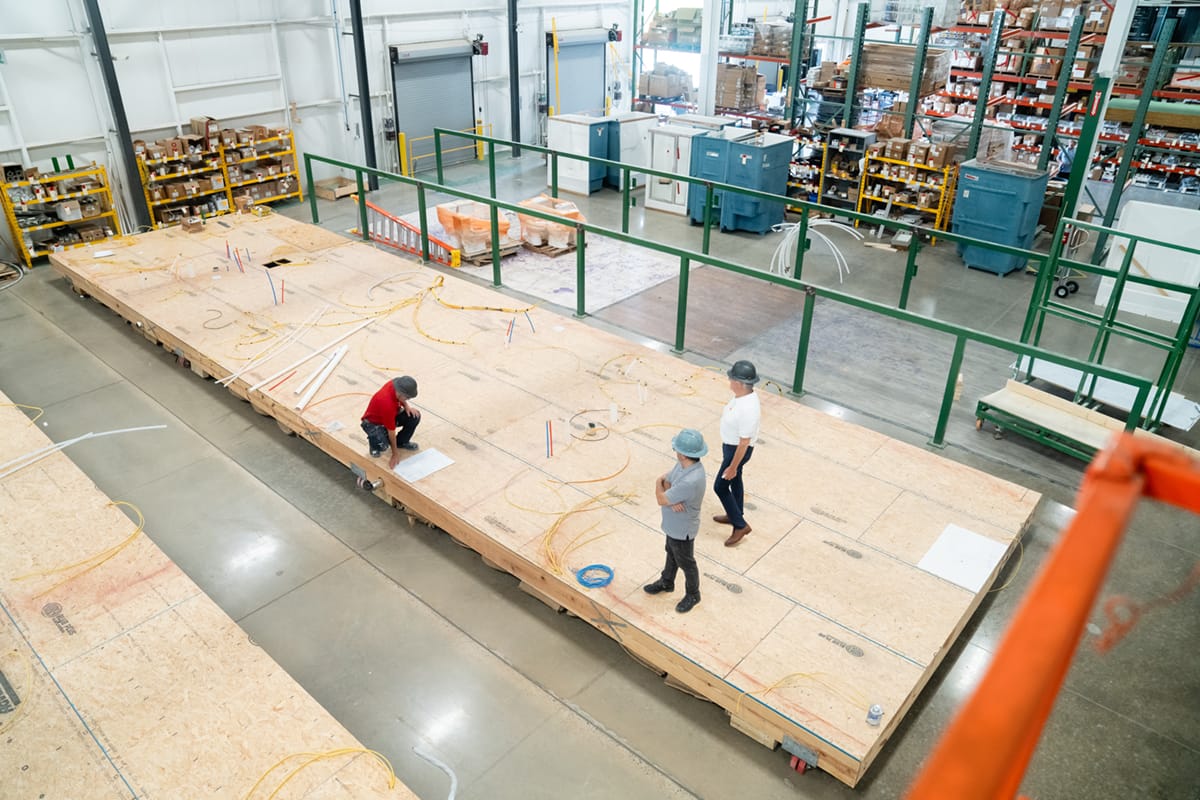
Balancing Standardization with Customization
Clients can tailor aesthetics without disrupting schedules or budgets. “We work either with architects or our own product line, so they don’t touch structural or mechanical systems,” Gaxiola says. “Clients can adjust the look and feel without blowing the schedule or budget.”
Coaching ensures expectations are aligned. “A lot of times, clients don’t know—they’re used to conventional construction. When we lay the ground rules, they start understanding how to preserve benefits like aggressive pricing. But if they’re not ready for modular, we might just tell them, ‘This project’s not for us,’” explains Gaxiola.
Community-Friendly Construction
ModMax’s approach offers clear advantages for municipalities and community stakeholders, particularly with site planning, timelines, and neighborhood impact. “Our designs fit standard zoning footprints,” Gaxiola explains, ensuring compatibility with existing regulations and site layouts.
Construction timelines are compressed. “Units are set in days and finished in weeks,” he says. “So the timing is much faster than conventional builds.” The impact on neighborhoods is also minimized: less disruption, fewer trucks, and quieter installs than stick-built construction.
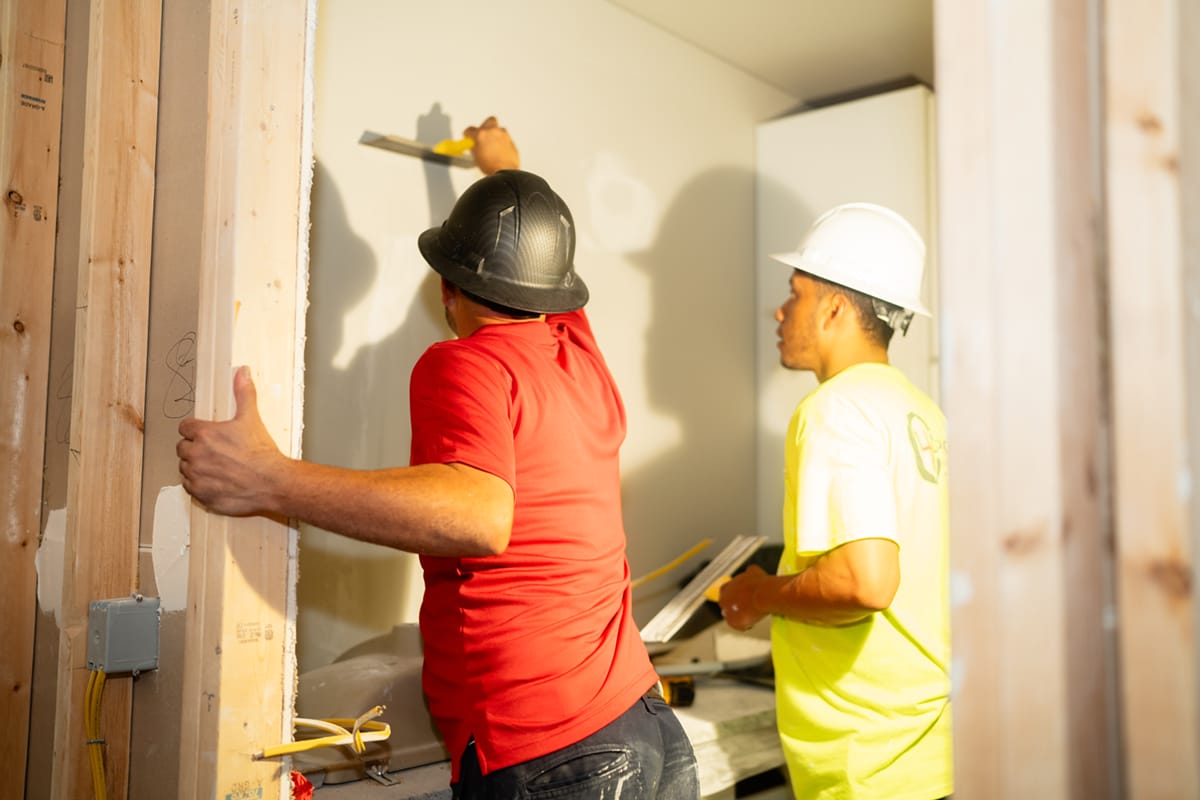
Performance, Precision, and the Power of Data
Every project enters through BIM, then flows into ModMax.AI for planning and QA/QC. Performance isn’t an afterthought. “Enhanced envelope performance, acoustics tested for comfort, HVAC zoning for healthier air, and fire/life safety above code,” Gaxiola says.
BIM and ModMax.AI integrate factory and field. “BIM isn’t just drawings—it’s the front door to a fully integrated system,” Gaxiola explains. “Data flows from BIM into our AI, which merges ERP and CRM functions. When a customer moves forward in the CRM, it triggers the ERP—materials are planned, production scheduled, and dashboards updated in real time.” The result: a true BIM-to-factory-to-field loop, with live data for all stakeholders, reducing surprises and accelerating delivery.
Pull the Lever and Build Better
To be set up for success, Gaxiola says a great partner doesn’t need to be an expert in modular construction. “It could be zero,” he says. “They just have to be modular-ready.”
What does that mean in practice? For developers, it might look like coming to the table with site control and financing—or simply with a site, while ModMax helps work out the financing. For general contractors, it’s a willingness to coordinate site prep and crane operations as true integrators. For architects, it means embracing ModMax’s standardized structural frames and MEP cores as tools for design freedom rather than limitations.
“All of them can use our company as a lever to max out the experience,” Gaxiola explains. “That’s one of the reasons we call it ‘ModMax.’ Just move it, turn it on, and it becomes an extension of your company.”
Lessons from Experience
Experience has shaped ModMax’s approach. “We’ve learned not to over-promise schedules. Instead, under-promise and over-deliver,” Gaxiola says. Early investment in QA and alignment between the field and factory is key. His advice: discipline, transparency, and collaboration. “Those principles make modular succeed,” he adds.
Scaling with Confidence
In the next 12 to 18 months, ModMax is expanding across Tennessee, Georgia, Alabama, and the Carolinas. First-wave communities will focus on duplexes, triplexes, and workforce housing, while partnerships with developers, GCs, and municipalities grow.
“The next 12 months are about proof at scale,” Gaxiola says. “Modular isn’t just faster—it’s the confidence path. Developers, cities, and families can trust homes will be built on time, on budget, and at scale. At the core, it’s about giving communities housing they can count on and doing work the team can be proud of.”
About the Author: John McMullen, PCM, is the marketing director for the Modular Building Institute. You can reach him directly at mcmullen@modular.org or on LinkedIn.
More from Modular Advantage
Resia: Breaking All the Rules
Resia Manufacturing, a division of U.S.-based Resia, is now offering prefabricated bathroom and kitchen components to industry partners. Its hybrid fabrication facility produces more precise bathroom and kitchen components (modules) faster and at lower cost than traditional construction. Here’s how Resia Manufacturing does it.
How LINQ Modular Innovates to Bring Modular To The Market in the UAE and Beyond
LINQ Modular, with an office and three manufacturing facilities in Dubai, is a modular firm based in United Arab Emirates. The company is on a mission: to break open the housing and construction markets in the Gulf Cooperation Council (GCC) area with modular.
LifeArk: Disaster-Resilient Housing from Recycled Plastic and 100-year-old Technology
Wee compares LifeArk’s housing units to Yeti coolers, as they are built similarly. Each component takes 15 to 20 minutes to manufacture, has an R-value of 40, and includes molded slots and chases for wiring, plumbing, fire sprinklers, and other utilities.
Building the Future of Modular Edge Infrastructure
The edge data center market is expanding rapidly, driven by the surge in AI workloads, IoT adoption, and the need for localized compute power. In these environments, sustainability, scalability, and reliability are non-negotiable. Cooling is among the most complex challenges for operators—and one of the most decisive factors in long-term success.
Accelerating Light-Gauge Steel Construction: A Semi-Automated Digital Workflow for Off-Site Projects
For construction professionals, the message is clear. By adopting semi-automation and digitalization, companies can deliver projects faster, more accurately, and more profitably, while also building stronger collaboration across teams. The approach is not about replacing people with machines, but about empowering people with better tools and processes.
Why Modular Data Centers Are Gaining Momentum
Artificial intelligence, high-performance computing, and edge applications push the limits of traditional “stick-built” data centers. They take years build, often struggle with high density workloads, and aren’t optimized for deployments near end users. Modular data center platforms are purpose-built to address these challenges, offering flexibility and scalability to adapt to evolving technologies, while opening new opportunities for the modular construction industry.
Supply Chain Innovation in Action: 5 Habits Every Modular Leader Should Practice
By applying these principles to supply chain practices — collaborative planning, strategic procurement, scenario modeling, digital tools, and transparent forecasting — construction leaders can build value chains that are not just efficient and agile, but truly innovative.
Exploring the Role of Modular Integrated Construction (MiC) in Advancing Circular City Principles – A Survey of Stakeholder Perspectives
The survey findings highlight the significant potential of Modular integrated Construction (MiC) in advancing the development of circular cities. By reducing costs, accelerating construction timelines, and minimizing waste generation, MiC offers a promising approach to sustainable urban development.
The Use of MS POLYMER™-Based Sealants and Adhesives in Modular Building
These products combine flexibility and elastic recovery with excellent adhesion to different substrates and have already shown their usefulness in traditional construction. Now it’s time for them to be put to use in the modular construction industry.
From BIM to Execution: Turning a “Pretty Picture” into a Single Source of Truth for Off-Site Construction
When implemented properly, BIM becomes the company’s digital backbone: connecting teams, standardizing information and transforming data into actionable insights. It is the key to achieving lean, predictable operations where all phases – design, planning, procurement and project execution are empowered by a single source of truth.










